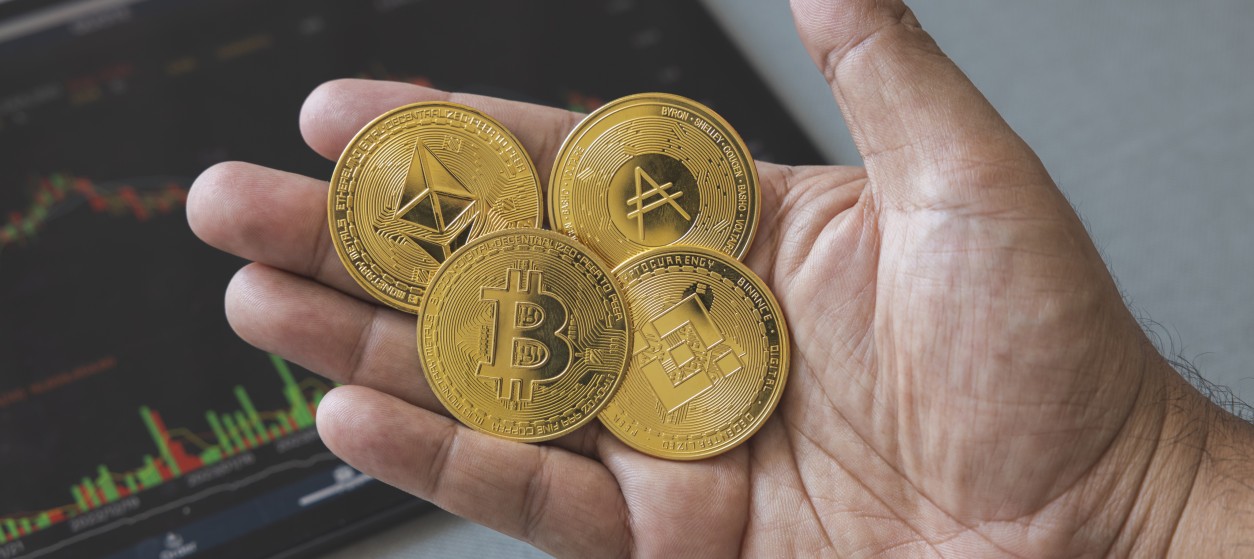During the last year, there has been a lot of buzz around bitcoin due to the growing interest of investors in this form of cryptocurrency. At the same time, there is also a surge of interest around blockchains and distributed ledger technologies which are the main technological foundations of bitcoin. In particular, blockchains and distributed ledger technologies are combined with cryptographic operations such as blind signature and secret sharing in order to address accountability and anonymity which are the two prerequisite issues for the operation of bitcoin and other electronic cash systems. Specifically, blind signatures allow signing a document without actually seeing it while secret sharing facilitates the detection of double use of the same e-cash token (i.e. it deals with the risk of double spending). Hence, bitcoin is based on a unique combination of electronic cash and distributed systems concepts.
Bitcoin is not however the sole cryptocurrency. The above-listed concepts are already enabling the operation of a wide range of currency-related blockchains which form the basis of alternative coins that are conveniently called “altcoins”. Even though the bitcoin represents the lion’s share of the cryptocurrencies market, the investment base of the other cryptocurrencies are considerable and already measured in billions of dollars. However, there are hundreds of altcoins in the market with varying monetary values. In the following paragraphs, we introduce some of the most prominent altcoins, notably the ones with significant operational properties and/or considerable monetary value. We also discuss the mechanisms that are driving their creation, as well as what makes them different from bitcoin. The presentation of these differences assumes that you are familiar with the main concepts and operational properties of the bitcoin such as Proof-of-Work (PoW) mechanisms, hashing functions, difficulty adjustment and the total coin supply.
Creating AltCoins
There are two main ways in which altcoins are created. Most of the projects that underpin altcoins are direct forks of BitCoin source code. However, there are cases of new cryptocurrencies that have been developed from scratch. One of the main motivations behind the development of some altcoins was to address some of bitcoin’s limitations such as privacy and data protection. In general, most of the altcoins are destined to become improved versions of the bitcoin. This is the reason why the principles and technologies that drive the operation of alternative coins are similar to the ones used by BitCoin. However, alternative coins differ from BitCoin in various parameters such as the supply of coins, the cryptographic algorithms used, the consensus and proof-of-work techniques that they implement and many more
Also note that altcoins are in several cases associated with hard forks in existing blockchins. In particular, in the case of a hard fork in existing blockchains, an altcoin is created by definition. Whenever a fork occurs the older chain is usually considered as an alternative coin. As a prominent example, a recent hard fork in the popular Ethereum chain has resulted in a new currency namely the ETC (Ethereum classic). The latter is different from the mainstream Ethereum (ETH) currency. In this case, ETC refers to the old chain which ETH is based on the new chain following the fork.
Hard forks are in general undesirable for a number of reasons. First, they are against the core philosophy of blockchain technologies as they violate the consensus principle which is one of the main principles of a blockchain’s operation. Moreover, they result in a segmentation of a coin’s user community as a hard fork is a typical result of users’ disagreement. Furthermore, the altcoin that is created following a hard fork provides very limited added value to its users, since its fundamental characteristics are exactly the same as the original blockchain. As a result, the suggested way for creating an altcoin is either to fork the bitcoin code towards improving the limitations of the bitcoin blockchain or to develop an entirely new coin with the desired parameters and features.
Prominent AltCoins
In the following paragraphs, we illustrate some of the most popular altcoins including coins developed from scratch and coins produced based on enhancement to the bitcoin code.
Namecoin
Namecoin has a prominent position in the list of altcoins because it is the first fork of the bitcoin source code. The fork aimed at improving bitcoin in terms of decentralization, resistance to censorship, privacy, security, and faster decentralized naming. It leverages decentralized naming services which could overcome the inherent limitations such as slowness and centralized control that is prevalent in the traditional Domain Name System (DNS) protocols used in the Internet. Namecoin’s improvements over bitcoin are reflected in its ability to securely store and transfer names (keys) while attaching values to them. These features are also the foundation for the Namecoin digital currency. It’s also noteworthy that Namecoin was the first blockchain to introduce merged mining which allows miners to mine on more than one chain simultaneously.
Litecoin
Like Namecoin, Litecoin has been created as a fork of the bitcoin source code. It was released in 2011 and uses Scrypt as Proof of Work (PoW) mechanism. Scrypt is a sequentially memory hard function which has been introduced as an alternative to the SHA-256 hashing and PoW algorithm of the blockchain. Srypt has been originally introduced as a password-based key derivation function which leverages a large array of pseudo random memory-held bits in order to produce a password key.
It’s main advantage over bitcoin is that it supports faster transactions. In particular, Litecoin blocks are generated every 2.5 minutes rather than 10 minutes which is the block generation rate of the bitcoin. As a direct consequence of its faster block generation times, the Litecoin blockchain readjusts its hashing difficulty every 3.5 days. Moreover, Litecoin comes with a higher coin supply than bitcoin i.e. its coin supply is set to 84 million.
Primecoin
Primecoin’s prominent position in the altcoin’s landscape stems from the fact that it is the first digital currency which introduced a useful PoW task namely searching for prime numbers rather than conventional SHA-256 hashing. PoW in primecoin is about searching from three classes of prime numbers namely Cunningham chain of first kind, Cunningham chain of second kind and bi-twin chains. Difficulty is adjusted dynamically based on a continuous evaluation scheme which aims at ensuring that prime numbers verification is efficient in order to avoid a possible slow-down of the blockchain. In this context, the primecoin introduces a difficulty adjustment in every block rather than in every 2.016 blocks which is one of the operational characteristics of the bitcoin. This makes primecoin flexible to accommodate changes in hash power. Another difference between primecoin and the above-listed cryptocurrencies is that there is no fixed coin supply. Rather the total number of coins generated is driven and dynamically decided by the primecoin community.
Zcash
Zcash is one of the more recent cryptocurrencies, as it was launched in 2016. It differs from other currencies based on the fact that it provides complete privacy to its users based on a so-called “zero knowledge proofs” mechanism. In particular, it uses proofs that are short and easy to verify yet the creation of initial public parameters for them is a complex process that cannot be practically counterfeited as this requires compromising all participants of the blockchain. In March 2017 a foundation (i.e. the Zcash Foundation) was launched to guide the evolution of Zcash.
Peercoin
Peercoin stands out in the long list of altcoins because it is the first SHA-256 coin that leverages Proof-of-Stake (PoS) in addition to PoW. It was launched in 2012 with the vision of alleviating the high energy consumption of the bitcoin with the aid of the PoS system. The use of this PoS/PoW system results in inflation which is currently approx 8%. Peercoin’s money supply depends on the following factors:
- PoW mining which increases coin supply.
- PoW difficulty level as higher difficulty decreases the reward per block.
- The number of transactions given that more transactions decrease supply as a result of the current 0.01 PPC transaction fee.
- PoS system which increases supply at a rate of up to 1% per year.
As more participants mine peercoins, the block reward gets smaller which is one of the main mechanisms employed by peercoin in order to decrease energy consumption in the long term.
The above-listed altcoins is by no means exhaustive, as there are currently more than 100 different types of blockchain-based digital cash in the market. However, the list includes some of the most prominent coins which follow BitCoin and Ethereum with significant market presence . While Bitcoin seems to monopolize investor’s interest, it’s important to know and understand altcoins and their underlying mechanisms. The main reason is that each of these coins implements ideas that improve certain aspects of bitcoin and facilitate the understanding of the operational parameters of a blockchain. The blockchain’s parameters are of significant interest to all the blockchain stakeholders including developers, integrators, operators, users of blockchain technologies in the finance sector and beyond.











Experience true financial privacy with TornadoCash. Protect your identity and transactions on the Ethereum blockchain
Looking for anonymity in your Ethereum transactions? Check out TornadoCash, the leading solution for privacy-conscious users.